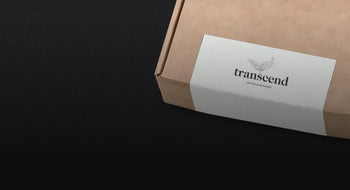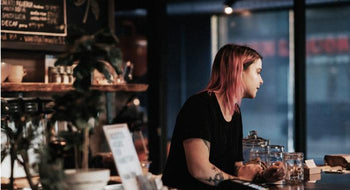Flavours in coffee

What does coffee taste like?
I have been conducting coffee tastings with customers for over twelve years. Without fail, most people struggle with how we in the coffee business talk about the flavours we find in coffee. When I ask people to describe what they taste in coffee, most answer “coffee”, with a look of befuddlement on their face.
We are more familiar with the concept of flavours in wine, and beer, but coffee too, can possess flavours that most drinkers would not normally associate with what they have grown to expect in their morning cup of joe.
Coffee at its best, can offer up vibrant fruity flavours (lime, orange, grapefruit, strawberries, black currant) and also possess flavours on the non-fruit spectrum (cacao, hazelnut, walnut, molasses, honey, spice). And coffee at its worst, can taste like burnt rubber, mold, diesel, dirt, and often charcoal.
Like wine, which is made from the juice of grapes, and at its best, offers up amazing complexity, coffee too is a byproduct of a fruit. Coffee cherries grow on trees, and like grapes are subject to all of the same variables which drive quality; growing conditions, nutrition, sunlight, rain, pruning, soil conditions. In the world of wine the notion of “terroir” (place) unifies all of these factors that drive the quality of the fruit. These same conditions are at work in coffee; regulating the amount of sugar and the presence of complex fruit acids in the cherry. When that coffee cherry is picked fully ripe, it has the ability to impart amazing complexity and flavours via the seed, which is what we roast and brew.
Our perception of the flavours in coffee comes mostly from the presence (or absence) of volatile aromatics released in the brewing process. Unfortunately, most people do not drink coffee which is made from freshly roasted coffee beans, and as a result, will not be able to experience much of what is described above. When we roast coffee, we transform a green seed into something amazing. However, the roasting process is extremely damaging to that coffee seed, and it makes the coffee bean very susceptible to the effects of staling. As cell structures are compromised in the seed during roasting, the end result provides oxygen access to the seed’s inner core. As a result, roasted coffee stales extremely quickly. In addition, the volatile aromatics which are responsible for most of the flavour in coffee dissipate very quickly after roasting, and even more quickly after the coffee is ground. To offset this staling process, most quality coffee is packaged in non-permeable bags which have been flushed with nitrogen (an inert gas) to displace any oxygen in the bag.
The starting point to enjoy all the potential coffee has to offer, you must start with quality. If coffee is over-roasted the roast profile will get in the way of experiencing much of the potential coffee has to offer up. If coffee is picked unripe, it will be astringent and have unpleasant characteristics. If coffee isn’t properly dried, sorted and prepared for export it will suffer in quality. All of these factors contribute to the inherent quality of the coffee you drink. All of the factors that drive quality also drive the cost associated with it, as you might expect. In coffee, more than in many other products, the adage, “you get what you pay for” is definitely in play. At Transcend, we are committed to a lighter roast profile that is common within the industry, in order to accentuate the unique flavour profiles that come from the high-quality coffees we source. As a result, you can taste the difference in the processing methods (washed vs. natural, or honeyed). You can taste the uniqueness of varietal and definitely taste the impact of place and perhaps more importantly, the people involved in growing the coffee.

-Poul Mark
Transcend's Founder



Leave a comment